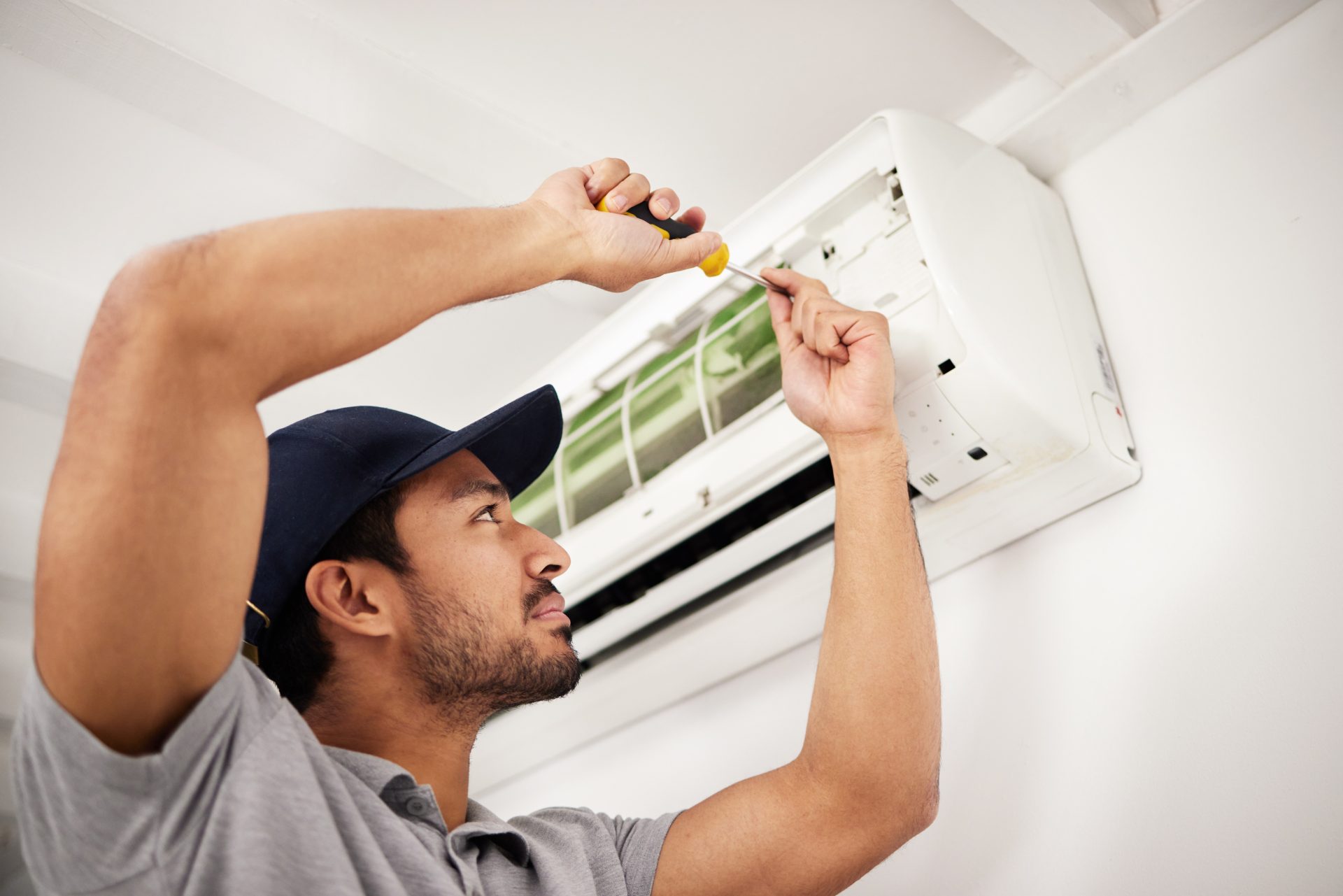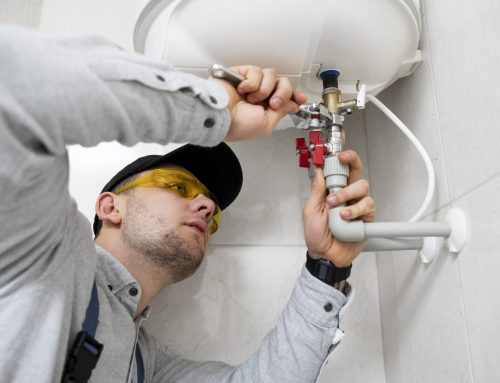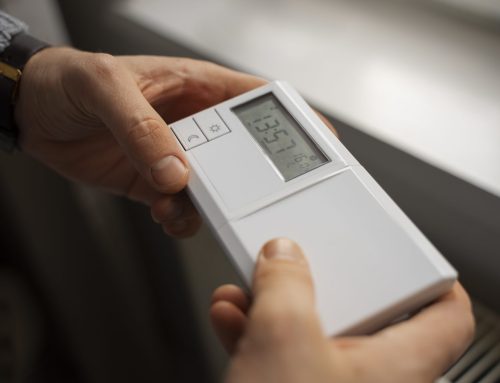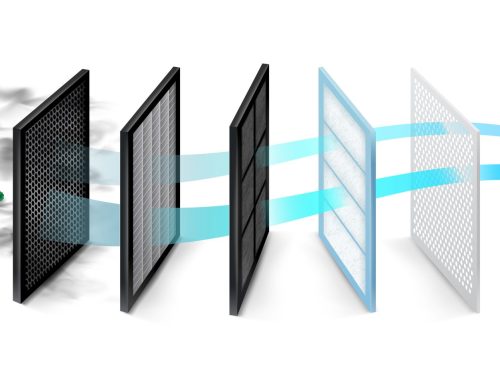An air conditioning leak is a common problem that can affect system performance. Understanding the basic operation of the air conditioner is essential to identify these faults. There are various causes that can lead to refrigerant loss. Recognizing early symptoms and warning signs allows for quick and effective action. Timely detection and repair are fundamental to ensuring the proper functioning of the air conditioning system.
Basic operation of the air conditioning system
The air conditioning system is a set of components designed to regulate the temperature and humidity of the air in enclosed spaces. The essence of its operation lies in a refrigeration cycle, where the refrigerant plays a fundamental role by absorbing indoor heat and releasing it outside.
The process begins in the evaporator, where the refrigerant, in liquid state, evaporates as it absorbs heat from the surrounding air. This heat exchange cools the air that circulates into the interior space. Then, the refrigerant, now in gaseous state, is directed to the compressor. Here, the refrigerant’s pressure and temperature are increased, preparing it to release the absorbed heat.
Afterwards, the hot, high-pressure refrigerant passes into the condenser. In this stage, the heat is expelled outdoors, causing the refrigerant to condense back into liquid form. Finally, the liquid refrigerant returns to the evaporator, and the cycle repeats. This continuous cycle ensures constant cooling, providing a comfortable environment.
- Evaporator: Absorbs heat from indoor air.
- Compressor: Increases refrigerant pressure and temperature.
- Condenser: Releases heat outdoors and condenses the refrigerant.
- Expansion valve: Regulates the amount of refrigerant returning to the evaporator.
These components must be in perfect condition and properly maintained to ensure optimal performance. Any alteration in this cycle can lead to system malfunction, affecting cooling capacity and comfort in the conditioned space.
Main causes of refrigerant gas leaks
Refrigerant gas leaks in an air conditioning system can originate for several reasons. Knowing these causes is essential to effectively address the problem and prevent further damage. Below are some of the most common contributing factors:
- Wear of connections: Over time, pipe connections may loosen or deteriorate due to constant use. This wear usually compromises the system’s seal, allowing refrigerant to escape.
- Damaged joints and seals: Joints and seals are critical components that can wear out and break. This type of damage can cause micro-leaks that, although small, affect AC performance.
- Pipe perforations: Impacts, blows, or corrosion can cause perforations in the refrigerant circuit pipes. Harsh environmental conditions also play an important role in the formation of these cracks.
- Faulty installation: A poor installation process can result in poorly sealed or loose connections. Ensuring proper installation by professionals is crucial to avoid leaks from the beginning.
- Corrosion: Corrosion of metal components in the system is another frequent cause of leaks. Moisture and lack of maintenance accelerate this process, especially in very humid climates.
- Excessive pressure: When the system operates at pressure above recommended levels, pipes and connections may be damaged. Maintaining proper pressure is vital for correct AC operation.
- Use of inappropriate refrigerant: Choosing an incorrect or low-quality refrigerant can wreak havoc on the system, damaging pipes and connections. Using the refrigerant specified by the manufacturer is essential.
Identifying these causes allows for early diagnosis and preventive or corrective measures to ensure proper air conditioning operation.
Symptoms and signs of an air conditioning leak
Detecting an AC leak is crucial to maintain functionality and efficiency. There are several symptoms that may indicate system problems. Recognizing these signs in time can prevent major damage and costly repairs.
- Reduced cooling performance: If the air conditioner doesn’t cool properly, there may be a leak. Poor performance is often an early sign that something is wrong.
- Unusual noises: Sounds like hissing, buzzing, or whistling coming from pipes or connections indicate refrigerant escaping. This is a clear sign that the system needs immediate inspection.
- Strange odors: Some leaks release a distinctive smell, similar to permanent markers. If detected indoors or inside a vehicle, it may indicate refrigerant leakage.
- Condensation buildup: Moisture or drops around pipes, the compressor, or evaporator suggest refrigerant is escaping, disrupting normal system function.
- Ice formation: Ice on refrigerant pipes may indicate a leak. Reduced refrigerant lowers pressure and temperature, leading to freezing.
- Frequent refrigerant refills: If refrigerant needs constant refilling, investigate for leaks. A system that continuously loses refrigerant will not operate efficiently.
Identification and detection of leaks in car air conditioning
Locating leaks in a vehicle’s AC system is essential for proper maintenance. Several techniques can be used to detect these problems without being an expert. Visual inspection is a good starting point, where moisture or oil stains can be observed around connections and components.
Sometimes unusual sounds, such as hissing, may indicate a leak. These noises come from refrigerant escaping, causing pressure variations in the system. If a leak is suspected, an effective method is using a leak detection kit. This usually includes a special dye that, when introduced into the system, allows technicians to identify the exact location of the leak using ultraviolet light.
- Visual inspection of connections and tubing.
- Listening for unusual noises when turning on the AC.
- Using leak detectors or fluorescent dyes.
Pressure tests also help confirm if a leak exists. This process involves pressurizing the system and checking if pressure remains stable over a set time. A pressure drop may indicate a leak. Ice formation on pipes can also be a sign that refrigerant isn’t circulating properly due to a leak, leading to low pressure conditions.
Combining these techniques provides a complete approach to identifying and detecting leaks in car AC systems. Detecting leaks in time prevents further damage and ensures proper climate control.
Repair and solutions for air conditioning leaks
When a refrigerant leak is identified, it is essential to act quickly to prevent further system damage. Locating the source of the problem is the first step in the repair process. For this, a visual inspection of the system is recommended, focusing on connections, seals, and pipes.
If a more precise intervention is required, the use of leak detectors or fluorescent dyes can be useful. These products are introduced into the system and, under ultraviolet light, allow any refrigerant escape to be seen. The next step is determining the most suitable repair methods.
- Replacement of damaged parts: Some connections, seals, or joints may need replacement. This improves system sealing and prevents future leaks.
- Pipe repair: In case of perforations or corrosion, welding or specific sealants can restore functionality.
- Recharging refrigerant: After necessary repairs, the system must be refilled with the type and amount of refrigerant specified by the manufacturer to ensure proper operation.
Pressure verification is crucial after repairs. It is important to ensure no further leaks exist through pressure testing. These procedures involve pressurizing the circuit and checking if pressure remains stable over time.
To prevent future problems, regular maintenance is key. Periodic inspections, including checking connections and components, help keep the AC system in top condition. Sometimes professional intervention is necessary to ensure safe and effective repairs, enabling efficient future operation.
Preventive maintenance to avoid refrigerant gas leaks
Prevention is key to ensuring the proper functioning of the air conditioning system and minimizing the risk of leaks. A regular maintenance program can make a big difference in the durability and efficiency of the equipment.
Performing regular inspections is essential. This way, components showing signs of wear or deterioration can be identified. It is recommended to carry out inspections at least once a year, or more often if the system is used heavily.
- Check connections and seals to ensure they are tight and in good condition.
- Clean air filters, as clogged filters can place extra strain on the system.
- Inspect pipes for corrosion or visible damage, which may indicate future problems.
- Check refrigerant levels and ensure there are no unusual drops.
- Hiring a professional for preventive maintenance can ensure all necessary steps are taken.
In addition to inspections, it is vital to use the type of refrigerant recommended by the manufacturer. Using the wrong refrigerant may cause system damage, increasing the risk of long-term leaks.
Finally, keeping the area around the AC unit clean facilitates early detection of potential problems. Dust and dirt buildup can hide symptoms that indicate system faults. Keeping the area clear and clean promotes efficiency and prolongs the system’s lifespan.
Impact of refrigerant gas leaks on health and the environment
Refrigerant gas leaks can have significant consequences for both human health and the environment. Many refrigerants used in AC systems are chemicals that, once released, can be harmful.
From a health perspective, exposure to certain refrigerants can cause a variety of symptoms, including:
- Headaches and dizziness.
- Nausea and gastrointestinal problems.
- Eye and skin irritation.
- In severe cases, breathing difficulties and suffocation.
These risks are especially concerning in enclosed environments, where gas concentration can increase quickly. Children, the elderly, and people with respiratory problems are particularly vulnerable.
The environmental impact of refrigerant leaks is equally alarming. Many refrigerants are potent greenhouse gases that contribute to global warming. Additionally, some refrigerants can damage the ozone layer, increasing UV radiation risks and their adverse effects on health and ecosystems.
It is crucial to note that pollution from refrigerant leaks affects not only local areas but also has global reach. Reducing these emissions is fundamental to mitigating climate change and protecting public health.
Therefore, early detection and repair of leaks in AC systems not only benefit directly affected users but also play an essential role in protecting the environment and public health overall.
Costs and considerations when repairing car air conditioning leaks
Repairing leaks in a car’s AC system can involve several costs, depending on problem severity and affected components. Factors influencing the total cost include:
- Type of repair: Simple leaks requiring tightening connections or replacing seals are cheaper than replacing major components like the compressor or evaporator.
- Labor: Labor prices can vary greatly between workshops. It’s advisable to research local rates.
- Refrigerant: The cost of refilling the system with new refrigerant should be considered, as some refrigerants are more expensive than others.
- Diagnostic equipment: Some workshops use advanced technology to identify leaks, increasing costs. However, this is highly effective for finding hidden issues.
It is essential to consider total cost, since ignoring a leak can lead to complete system failure, requiring much more expensive repairs later. The time taken to detect and repair a leak affects not only the budget but also vehicle comfort.
In many cases, early repairs result in significant long-term savings. Likewise, while it may be tempting to choose the cheapest option, it is crucial to ensure the workshop has the necessary experience and reputation for quality work.
Common problems from not repairing a leak in time
Ignoring a leak in the AC system can cause complications beyond poor performance. Problems include:
- Reduced performance: The AC works less efficiently, consuming more energy and raising electricity bills.
- Compressor damage: Lack of refrigerant makes the compressor work under non-optimal conditions, potentially overheating and failing. Replacing a compressor is very costly.
- Ice formation: Low refrigerant levels may cause evaporator coils to overcool, forming ice and blocking airflow.
- Environmental contamination: Some refrigerants are harmful to the environment, contributing to global warming and ozone damage.
- Health risks: Escaped refrigerants can be toxic, causing nausea, headaches, or even suffocation







